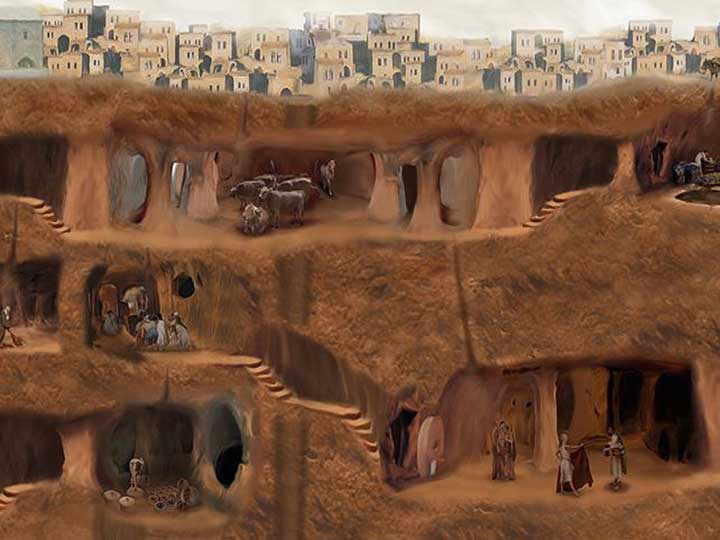
In the 1960s, a Turkish man was doing some casual home decor when he made one of the most amazing archaeological discoveries in history. When he knocked down a wall in his basement he made more room than he bargained for, stumbling across a gallery that led to an extensive 18-story-deep underground city we now know as Derinkuyu.
An almost 3,000-year-old underground city
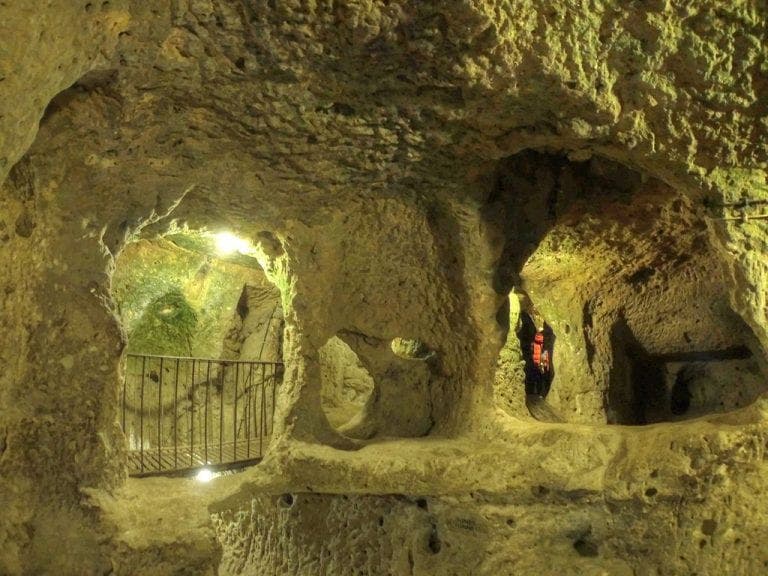
Derinkuyu, found in the province of Cappadocia, about four hours away from the capital Ankara, was carved bit by bit into the volcanic rock and consists of numerous subterranean settlements connected by tunnels that run for miles, similar to a man-sized ant colony. Parts of the underground network run as deep as 75 meters (250 feet).
The rock into which Derinkuyu was carved is made of layers upon layers of compact volcanic ash, known as tuff. This soft rock is porous and fragile, which explains how ancient people were able to carve the underground city extensively using simple tools like a pick and shovel.
The entire Cappadocia region of Anatolia has a rich volcanic history and sits on a plateau around 1,000 meters (3,300 feet) high. The region is littered with numerous cone-shaped tuff formations that rise from the landscape like minarets — and the region is no less impressive below ground.
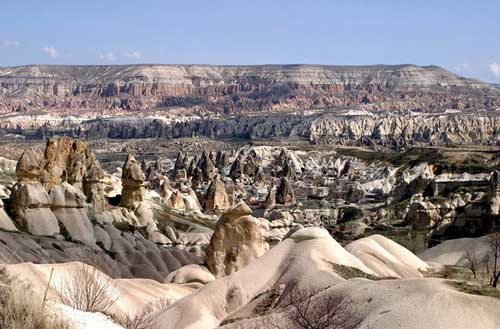
According to archaeologists at the Turkish Department of Culture, the first gallery was carved at Derinkuyu during the 8th-7th century BCE by the Phrygians, an ancient Indo-European culture that founded the Anatolian kingdom (12th-7th century BCE). The Phrygians were among the foremost architects of the Iron Age and are known for engaging in complex mega construction projects. Other theories suggest that the underground city was founded by Persians or Hittites.
One of the first possible written accounts describing Derinkuyu is credited to 370 BCE, found in a text written by Xenophon of Athens who, writing in his Anabasis, mentions people in Anatolia had excavated their homes underground. He adds that these underground dwellings were large enough for a family, domestic animals, and supplies of stored food.
Derinkuyu seems to have reached its peak during the Byzantine period. By this time, it grew into an extensive multi-level complex consisting of a labyrinth of tunnels and chambers, covering an area of 445 km2 (172 miles2). It's believed that Derinkuyu's population was as large as 20,000 inhabitants.
Advanced subterranean features
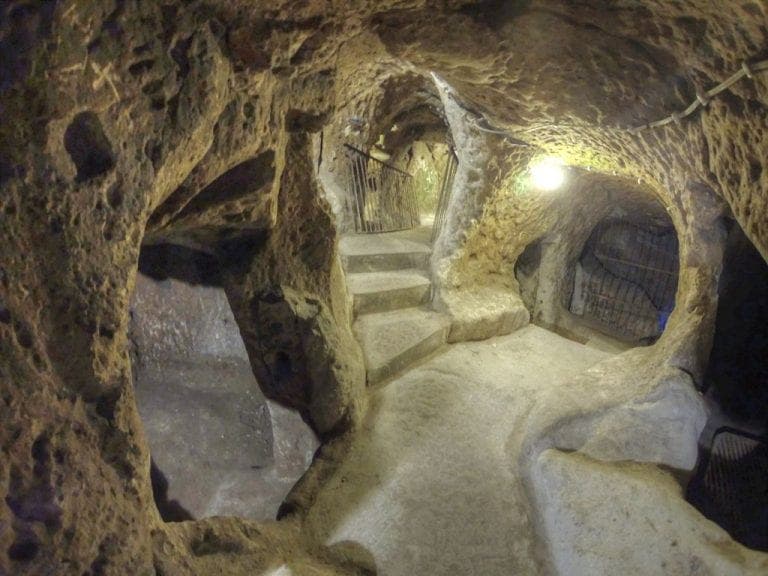
The underground city featured all the amenities available at the time to surface dwellers -- perhaps even more. The typical Derinkuyu home had living quarters consisting of bedrooms, kitchens, bathrooms, and often a small shrine. It had air shafts and water channels that ensured ventilation and flowing water. During the torrid summer days in Anatolia, Derinkuyu residents likely lived more comfortably than typical city dwellers of the time thanks to the constant cave-like temperature, although the lack of sunlight may have been quite a nuisance.
Water was supplied from underground shafts, such as the 55-meter-deep (180-feet) well pictured below. This primary well likely supplied residents both underground and on the surface with water. The water supply was controlled from the bottom-up, with lower floors able to cut-off supply to the upper levels, which helped to prevent invaders from poisoning the well.
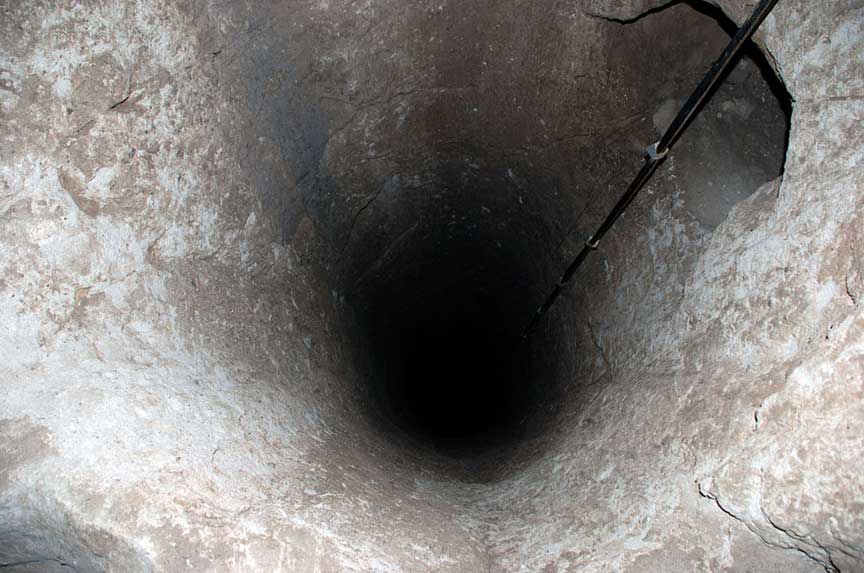
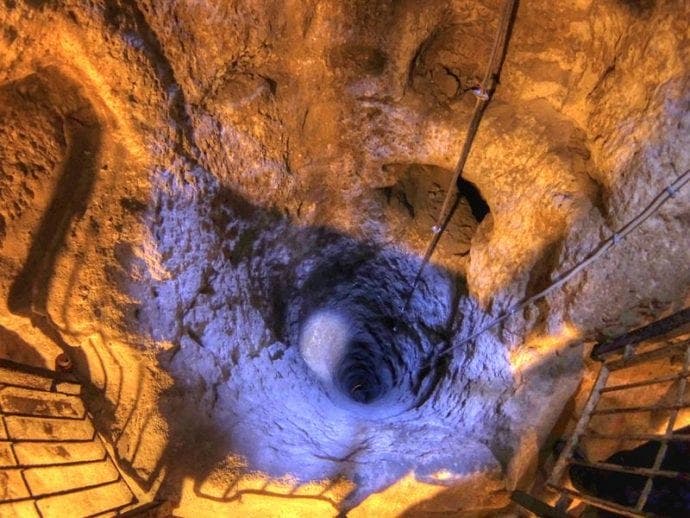
There were likely some downsides to life underground, but they were mitigated by the enhanced security Derinkuyu offered. Early Christians flocked to the city to escape persecution by the Romans. Then, during the Arab-Byzantine wars from 780 and 1180, Derinkuyu was a safe haven for Muslim Arabs, which significantly expanded the city.
When danger loomed, residents retreated underground, blocked the access tunnels with round stone doors, and sealed themselves in with livestock and supplies until the threat passed. As a last resort, the inhabitants could use hidden escape routes to make it out alive.
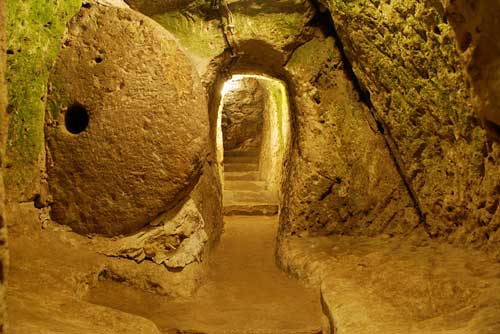
The miles of tunnels running through the Derinkuyu network were carved narrow on purpose, forcing would-be invaders to crawl through the passageway one at a time. These tunnels connected hundreds of cave-like shelters, which served as shelters and public areas like churches, markets, communal meeting areas, and schools. Illumination was done with torches.
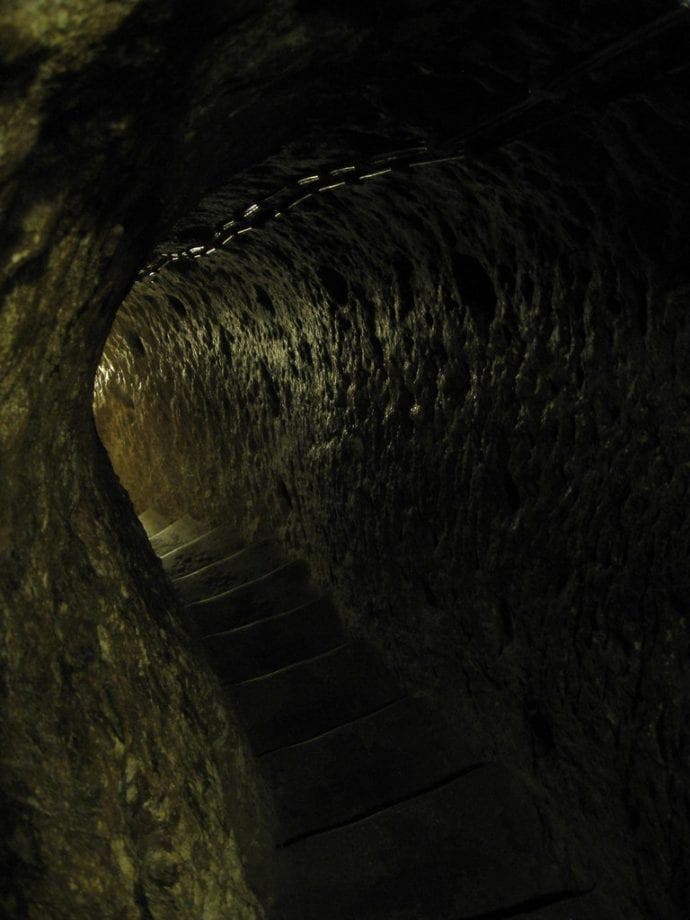
Derinkuyu isn't alone. Cappadocia, a region of central Turkey, is home to over 250 subterranean cities carved in tuff, as well as many cave churches. In 2013, archaeologists discovered a new Cappadocian underground city under a Byzantine-era hilltop castle in Nevşehir, the provincial capital. The site is believed to rival Derinkuyu and perhaps might even eclipse it, with early measurements indicating it is larger by about a third.
In fact, Derinkuyu was connected to another nearby underground city called Kaymakli through a 5-km-long (3-mile) tunnel, although it is now blocked after some sections of the tunnel have collapsed.
Derinkuyu is now open to the public to visit, although only 10% of the city is accessible.






